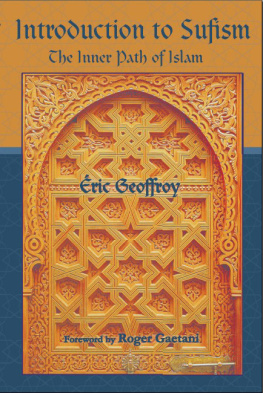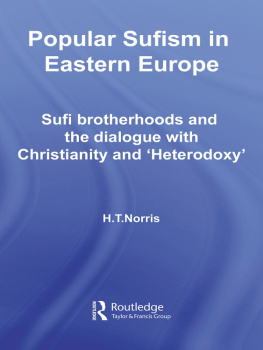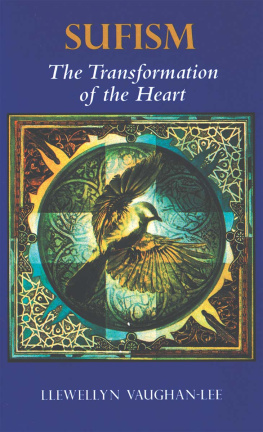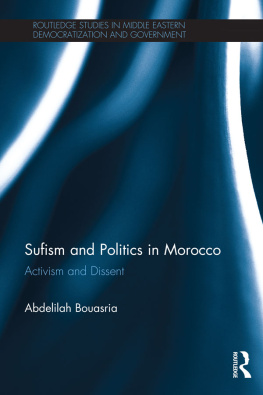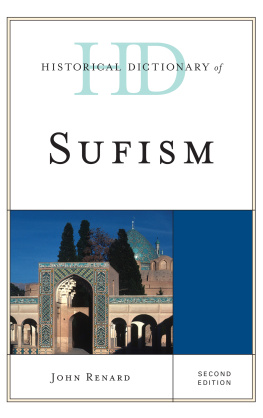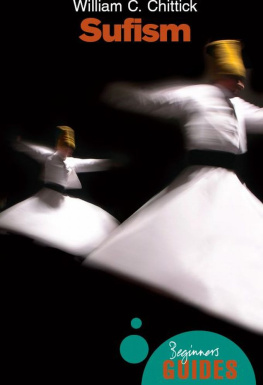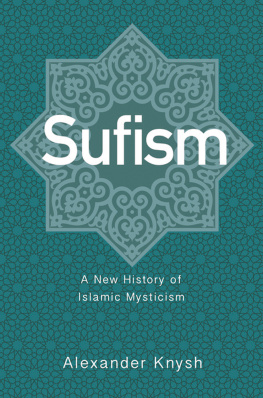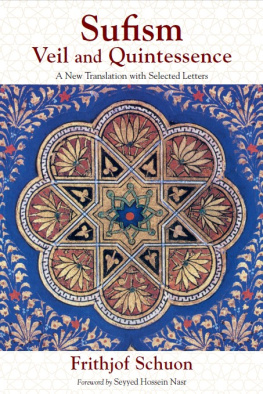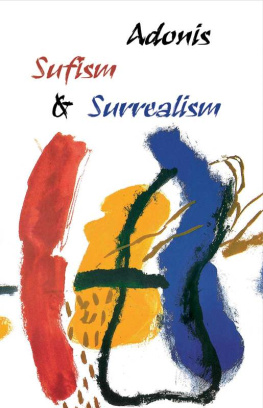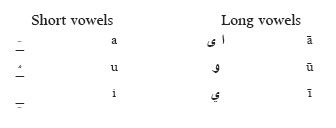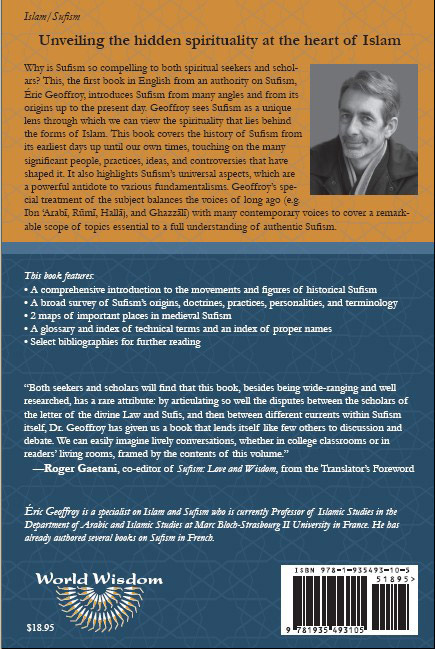TRANSLITERATION SYSTEM
FOR ARABIC CHARACTERS
The article al-and l-(even before sun letters)
BIOGRAPHICAL NOTES
RIC GEOFFROY is a scholar, translator, educator, and writer who is Professor of Islamic Studies in the Department of Arabic and Islamic Studies at the University of Strasbourg, France. He also teaches at the Open University of Catalonia, at the Catholic University of Louvain (Belgium), and at the International Institute of Islamic Thought (Paris). Dr. Geoffroy specializes in Islam and its mystical dimension, Sufism, often focusing on aspects of sainthood. Among others areas, his research also extends to comparative mysticism, and to issues of spirituality in the contemporary world (e.g. spirituality and globalization; spirituality and ecology, etc.). In addition, he is a member of an international research group on Science and Religion in Islam, through the Universit Interdisciplinaire of Paris.
Dr. Geoffroy gives many lectures all over the world (Europe, the Arab world, USA, Indonesia, and elsewhere) on subjects related to Sufism, and, more generally, to Islamic culture. Besides this, he has also participated in many international conferences. Geoffroy himself works on organizing conferences and seminars (for example for the Bibliotheca Alexandrina in Alexandria or the European Council in Strasbourg, etc.), and has written materials for a traveling exhibition on Sufism directed by the Arabic World Institute in Paris.
To date, ric Geoffroy has had seven books published. He has published numerous articles in journals on Islamic studies but also in some magazines such as Le Monde des Religions, Le Point Hors Srie, and La Vie. He has contributed some fifteen articles to the Encyclopedia of Islam (2nd and 3rd editions), and others to key reference books such as Les voies dAllah, Dictionnaire critique de lsotrisme, and Dictionnaire du Coran. Dr. Geoffroy is the official consultant on Islam for the French dictionary Le Petit Larousse.
Besides this, ric Geoffroy has on many occasions been the guest on some national and international radio and television broadcasts in Europe and in the Muslim world. His own web site, www.eric-geffroy.net, has links to some of his writings online, as well as to video and other links of interest.
ROGER GAETANI is a professional editor, translator, and educator. He was coeditor, with Jean-Louis Michon, of the World Wisdom anthology Sufism: Love andWisdom, and he later edited the award-winning A Spirit of Tolerance: The InspiringLife of Tierno Bokar, which details the life of the renowned African Sufi . In addition, Mr. Gaetani directed and co-produced the DVD compilation of highlights of the 2006 conference on Traditionalism, Tradition in the Modern World: Sacred Web 2006 Conference. While living and traveling in the Muslim world for some years, he came into contact with a number of leading Sufi figures and was able to see first-hand the remnants of Sufisms impact on Islamic civilization, but also its effect on the lives of those Muslims who still follow its path. He lives in Bloomington, Indiana with his wife.
Chapter 1
FUNDAMENTALS
DEFINITIONS AND OBJECTIVES
Sufism is nothing but idolatry, for its purpose is to preserve ones heart
from all that is not God; but, there is nothing other than God.
Shibl
Sufism is a reality without a form.
Ibn al-Jal
Anyone who would express his thoughts on Sufism is not a Sufi; anyone
who bears witness to Sufism is not a Sufi. In order to live Sufism, one must
be absent from it.
Ibn Bkhil
It is said that there are a thousand definitions of Sufism. Let us make an initial attempt at one. In Islam, the polarization between exoterism and esoterism is very pronounced. In the Koran, God presents Himself as, at the same time, the Outer (al-Zhir) and the Inner (al-Btin),1 under seemingly opposite Names which the Sufi will have to reconcile during his spiritual search. Are not the human soul and the cosmos in Gods image? For the Sufi, the outward proceeds from the inward, as the peel of a fruit encases the pit. Thus, Sufism represents the living heart of Islam, the inner dimension of the Revelation given to Muhammad, and not an arbitrary form of occultism.
Sufism can also be defined as an aspect of the eternal Wisdom. In several instances, the Koran mentions the immutable Religion (al-dn al-qayyim): this is the primordial religion, without name, from which all historical religions spring. The purpose of Islam, the last revealed message, was to highlight the divine Oneness,2 of which Adam was the first messenger. The Spirit bestowed Itself upon Islam as it had done before with other religious forms: In referring to Christian or Jewish spirituality, certain Muslims speak of Christian Sufism or Jewish Sufism. Authentic Sufism is played out in a harmony which the initiate must continually restore between the body and the spirit, and between religion as it was established on earth and its inner reality.
A Mysticism?
Sufism is commonly called Muslim mysticism. This expression does have a certain relevance if one understands it as the knowledge of the mysteries, as a communion with the divine through intuition and contemplation. The Koran, which distinguishes the world of Testimony (lam al-shahda), i.e. the perceptible world, from the world of Mystery (lam al-ghayb), asks the faithful to believe in this Mystery, the ghayb (literally, that which is not accessible to sight). One of the goals of Sufism, precisely, is to pierce through the opacity of this world in order to contemplate spiritual realities that lie beyond simple faith.
In the Christian world, the term mysticism has been extended to apply to cases which are imbued with individual subjectivism. According to Ren Gunon, mysticism is passive; the Sufi, however, actively undertakes labors in order to reach spiritual realization. Thus, Sufism is, essentially, an initiatory3 path in which the master-disciple relationship enables the regular transmission of spiritual blessings (baraka). Provided with this protection, the aspirant can progress along the path in order to go beyond the limits of individualitypotentially or in actualityand to reach deliverance. It has been said that Sufism is a state in which all human traces have vanished,4 and Sufism is freedom.5
The Sufi does not seek to withdraw from the world. His destiny is to achieve realization here and now, possibly even in the midst of the crowd. As the son of the moment, he must develop his spiritual qualities within the circumstances in which God has placed him. For all that, Sufism does display genuine mystical features. First of all, Sufis believe that it is God who takes the initiative in making them travel towards Him, and that their progress depends upon His grace. The aspirant (murd, one who desires God) moves along the path only because God desired (murd) him beforehand. The following hadth quds 6 expresses this: If he [man] draws nearer to Me a hands span, I draw nearer to him an arms length. If he draws nearer to Me an arms length, I draw nearer to him a fathoms length; and if he comes to Me walking, I hasten toward him.

